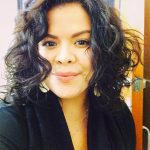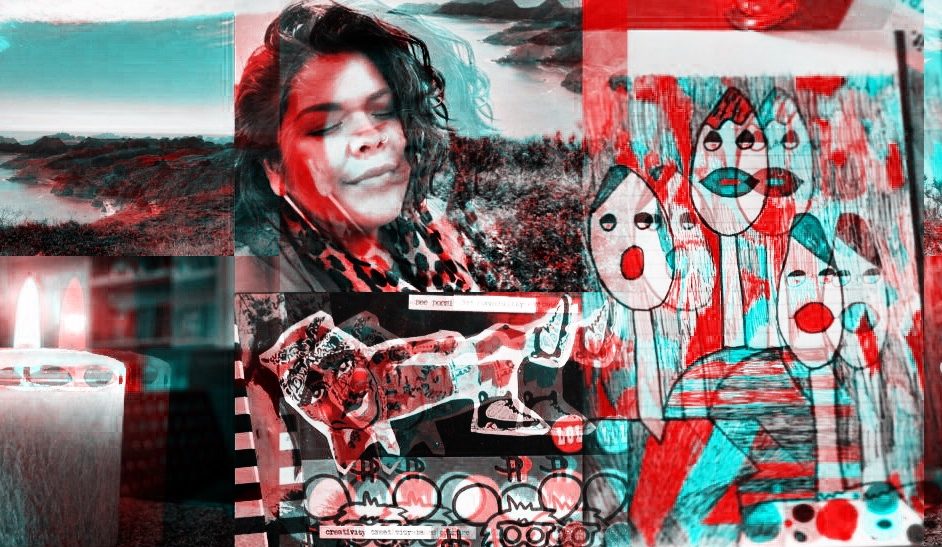Goals
The goals of CLAS are twofold: 1. To provide educators and youth workers with a lesson plan to use with teens and transitional-aged youth from marginalized communities to explore identity and personal narratives through autoethnographic research. 2. To provide youth from marginalized communities an opportunity to explore the topic of identity through the lenses of research, art, and personal narratives.
Intended Audience
Transitional-aged youth (16-24) part of marginalized communities and identities.
Size
7-12 people
Learning Objectives
- Youth will be introduced to and learn the basic concept of autoethnography
- Youth will be introduced to the practice of grounding meditation and self-reflection as foundational elements of personal narrative development
- Youth will be introduced to creative research methods in PhotoVoice and Digital Ethnography
Materials
- Paper in various colors
- Markers
- Pens and pencils
- Music for meditation if desired
- Poster paper
- Auto-Ethnography Templates
Time: 2 Hours (Session 1)
Overview & Context
Transitional-aged youth from marginalized communities and identities experience political, social, and cultural exclusion during one of the most critical developmental periods of their lives. Identity formation is the defining developmental characteristic of the teen and emerging adulthood years. For marginalized youth, identity is an especially complicated issue because identities have been imposed on them through media, culture, and socialization through a negative and incomplete lens, leaving youth with a fractured sense of self and loss of autonomy. It is important for those who work directly with youth during this developmental period to acknowledge the importance of identity formation within the context of marginalization and to develop strategies that empower youth to control identity formation.
Through the Creative Lens Autoethnography Sessions (CLAS), young people can explore their past, present, and future through their own lenses, providing space for positive and whole identity formation. Proposed below is the first session of the series, culminating in a final online autoethnography gallery.
The Creative Lens Autoethnography Sessions draw on the theoretical frames of critical race theory in education, mindfulness, growth-mindset, participatory research, autoethnographic research approaches. We believe that when youth are provided with safe, inclusive spaces that offer opportunities for reflection, introspection, and personal narrative, issues of identity surface, as this is the main developmental task of adolescence. When this occurs in groups of marginalized youth, it is important to frame discussion through critical race theory in education.
Procedure
- Introduction (5 min): Ensure there are community agreements on the wall for all to see, and that the day’s agenda is visible to everyone. Greet participants with snacks if possible. Explain what community agreements are for, how they can help groups work safely together, and how we intend to use them to create a safe emotional space for our group. Talk the group through the agreements and the agenda. Provide opportunity for people to make suggestions or ask questions.
- Opening the Circle (15 Min) – Learning Objective: 2
- Prepare the room so that chairs or cushions form a circle with space to enter.
- Ask the attendants to enter the circle and take a seat or lay down, and get comfortable.
- Begin by setting the intention to “open the circle” and ask the youth to consider what circles or cycles represent in their lives, and why they are important. Have youth close their eyes and take five minutes to talk them through a guided meditation (perhaps imagining circles of all types, walking in mazes, or envisioning mandalas). Then ask them to visualize a circle within themselves, creating an opening and allowing the circle to form a spiral that goes on and on.
- After five minutes, give youth space to wake up and ask them to share their thoughts on cycles, circles, and spirals.
- The intent of this is to set the stage for CLAS’s approach to learning, growth, and development: it is often cyclical rather than linear, and most importantly, it is personal and interconnected. When we allow the circle to become a spiral, we add dimension and understanding to our lives. We are open to our own potential and we can grow.
- Activity 1: Circles of Time 40 Min – Learning Objective 2
- This is a reflection activity. Youth create three circles on large pieces of paper with the themes “past,” “present,” and “future” using pictures, words or phrases that represent those themes to them. From these themes youth then reflect on their personal experiences and choose a word, phrase, or picture to represent their own “past,” “present,” and “future.” These personal circles are the foundation of their creative autoethnography projects.
- Break 10 Min.
- Activity 2: Choosing a Course 40 Min – Learning Objectives: 1&3
- This is a brief introduction into autoethnography, its purpose, and creative research methods (photovoice, digital ethnography, etc).
- Youth choose a preferred method to develop into their autoethnography project for a gallery at the end of the sessions.
- Youth create an autoethnographic proposal that outlines their chosen method, why they chose it, what their themes for past present and future are, and what they hope to learn in the process.
- Proposals will be displayed as posters that they will present to the rest of the group.
- Allow the group to ask questions and offer “props” or encouragement.
- “Hopes and Fears” 10 Min – Learning Objectives – 1 & 3
- Youth will sit in a circle again with an opening to symbolize the opportunity for growth.
- Ask each person to share one hope or fear they have about the journey in autoethnography that they are about to take. Provide space for people to ask questions or give encouragement.
- Ask youth to close their eyes again for a guided meditation. Guide them through a similar meditation as noted in Activity #1, but this time ask them to meditate on a spiral that represents their lives (past, present, and future). Ask them to visualize walking the spiral path and reflect on the people that show up in their meditation. Ask them to remember those people. Once they wake up from the meditation, ask them to write the names of the people they saw and to assign them to the past, present, or future as they showed up in the meditation.
- Collect their slips of paper for an activity for the next session and place them in individual folders to be placed in a locked cabinet for confidentiality reasons.
- Close out with thanking them for their bravery and creativity.
Additional Research and Supporting Materials
This document provides citations and links to supporting materials.
Final Thoughts
This lesson plan is part one of a series. Other sessions include inquiry into identity formation, social identity theory, critical race studies, PAR methods, creative writing and personal narratives, curating a personal art show, media, technology and art, autonomy, freedom, and the self.
About the Author
 I am Andrea Juarez Mendoza, artist, philanthropist, student, and educator from San Francisco. I work with marginalized youth ages 14-24 to develop youth leadership opportunities through entrepreneurial youth-led social justice projects. I’ve worked with youth in non-profits and after school programs for nearly twenty years and have learned that the most effective ways to keep young people engaged and invested is by including them in meaningful decision-making and providing safe spaces for identity exploration. My work and studies center on the principles of participatory action research – collective inquiry, reflection and action, rooted in personal and social histories and experiences.
I am Andrea Juarez Mendoza, artist, philanthropist, student, and educator from San Francisco. I work with marginalized youth ages 14-24 to develop youth leadership opportunities through entrepreneurial youth-led social justice projects. I’ve worked with youth in non-profits and after school programs for nearly twenty years and have learned that the most effective ways to keep young people engaged and invested is by including them in meaningful decision-making and providing safe spaces for identity exploration. My work and studies center on the principles of participatory action research – collective inquiry, reflection and action, rooted in personal and social histories and experiences.

